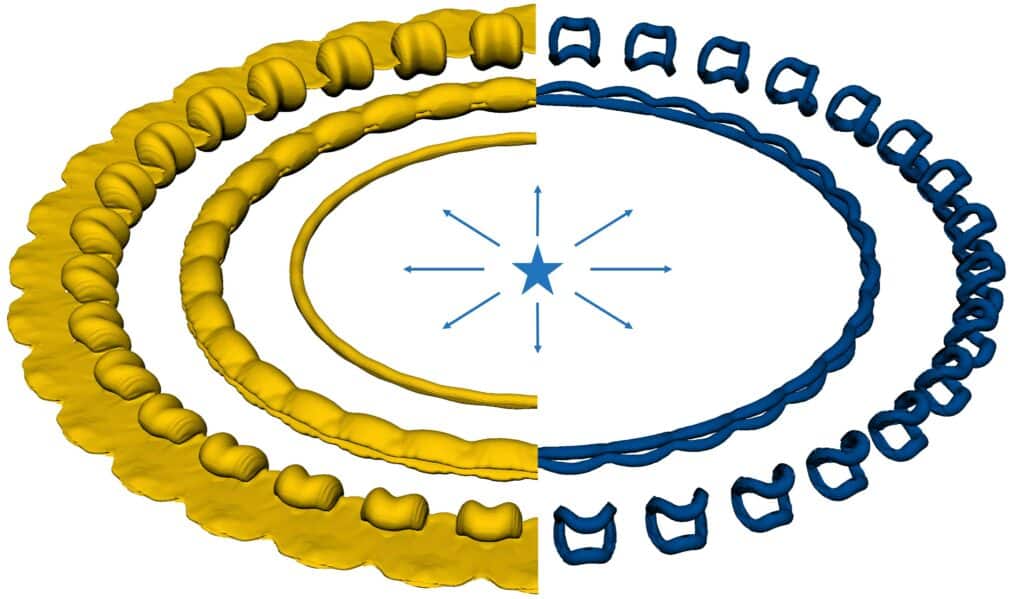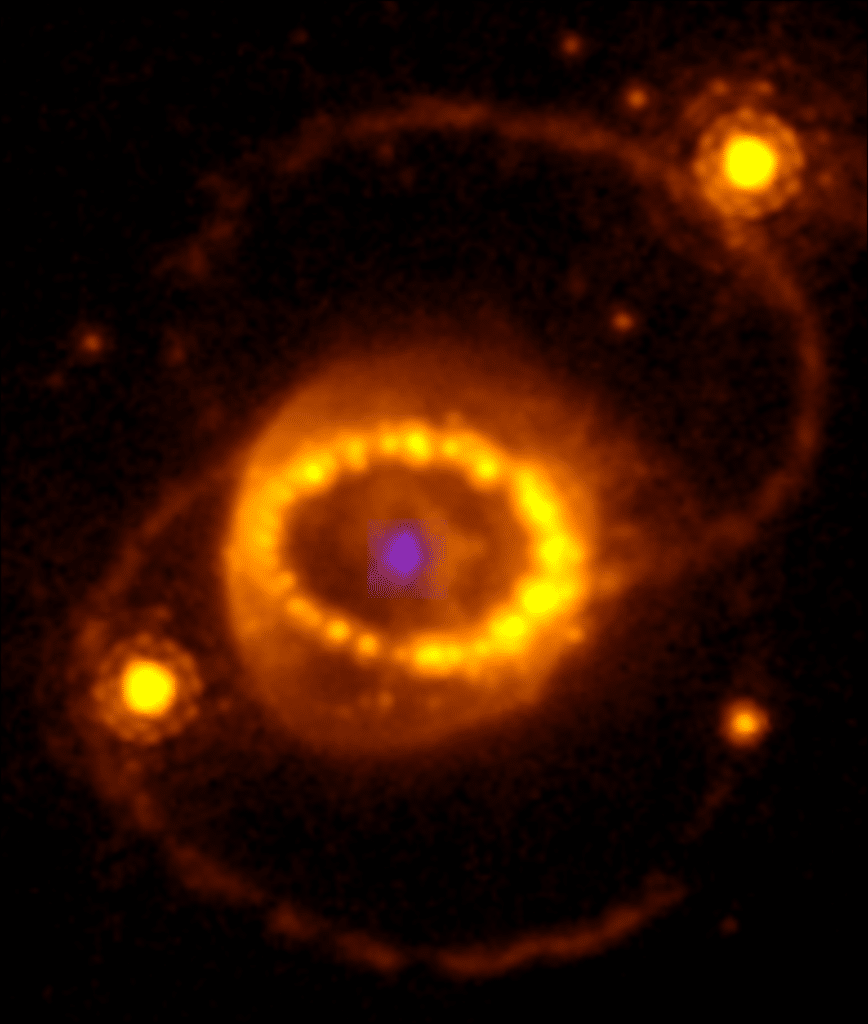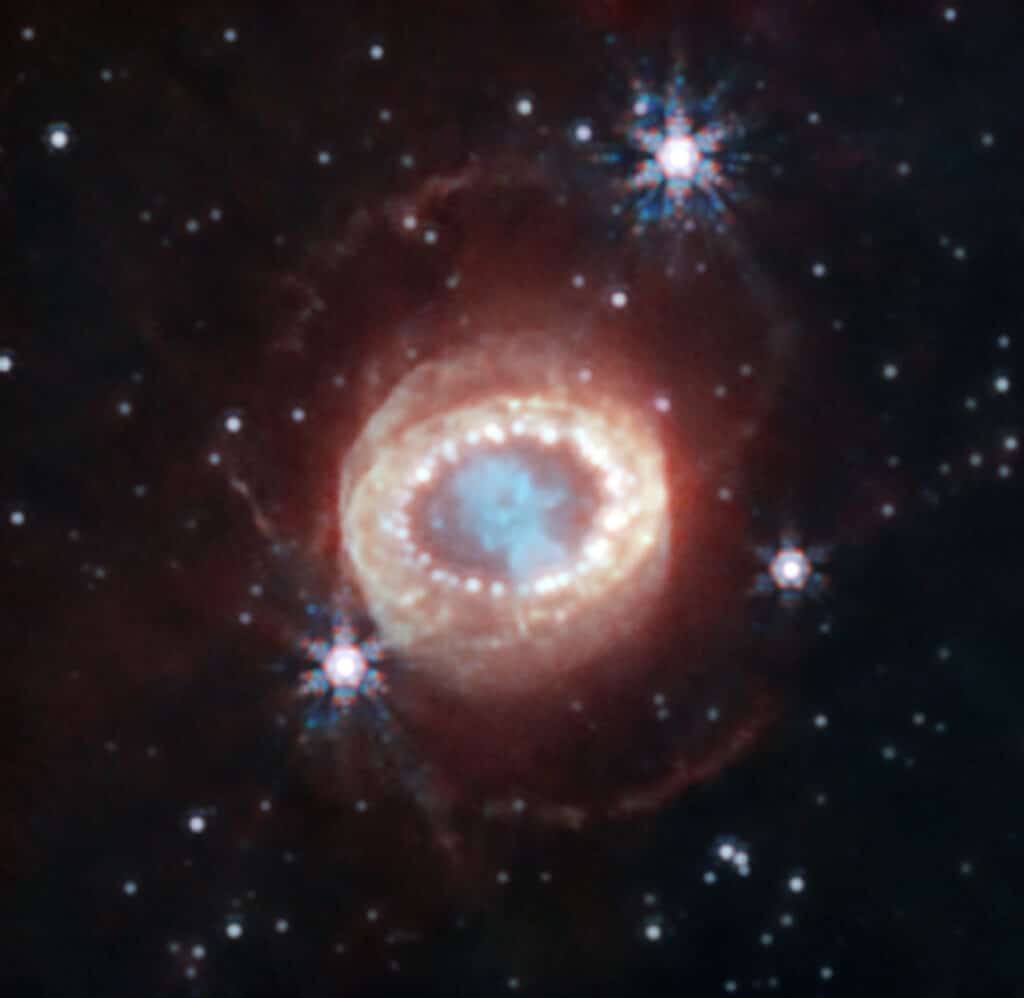Pieces of a longstanding cosmic puzzle are finally coming together. In a study published in the journal Physical Review Letters, University of Michigan researchers are providing a new perspective on supernova 1987A — specifically the ring of hydrogen clumps, likened to a “string of pearls,” that encircles the stellar remnant. The team proposes that the Crow instability, rather than the traditionally cited Rayleigh-Taylor instability, more accurately explains the formation of these clumps, offering new insights into astrophysical phenomena.
Supernova 1987A, located 163,000 light years from Earth, holds a special place in astronomical study as the closest supernova observed with modern instruments and the first visible to the naked eye since 1604. The surrounding ring of gas, formed from a merger of two stars that became a blue giant, has puzzled scientists for years. Researchers suggest that the same physics behind the breakup of airplane contrails — the Crow instability — also applies to the cosmic scale, illustrating a fascinating parallel between terrestrial and astronomical phenomena.

“The fascinating part about this is that the same mechanism that breaks up airplane wakes could be in play here,” says study corresponding author Michael Wadas, a University of Michigan graduate student in mechanical engineering at the time of the work, in a media release.
In airplane contrails, the Crow instability results from the interaction of wingtip vortices, creating visible gaps. This instability might explain the distribution and number of hydrogen clumps in the supernova’s ring, aligning with observations of 30 to 40 clumps, close to the study’s prediction of 32.
Supernova 1987A’s famous ring likely originated from the stellar wind of the blue giant, pushing and molding a cloud of gas into the observed clumps before the star’s explosive end. Researchers simulated this process, finding that the wind’s force could trigger the Crow instability, causing the gas to curl inward and break apart into evenly spaced clumps.
“That’s a big piece of why we think this is the Crow instability,” notes study senior author Eric Johnsen, professor of mechanical engineering at the University of Michigan.

Further support for this theory came from recent observations by the James Webb Space Telescope, which hinted at additional rings of clumps around the star, suggesting the Crow instability might be a recurring phenomenon in the aftermath of supernovae.
This insight not only deepens our understanding of the specific events surrounding supernova 1987A but also opens up new avenues for exploring the processes by which dust and gas around stars might settle into planets, indicating a broader applicability of the Crow instability in cosmic phenomena.













Comments